#chinese resources
Explore tagged Tumblr posts
Text
More Chinese Podcasts
Beginning of this list is for learners, and roughly gets harder as you go down, the last few podcasts are not made for learners.
Tea Time Chinese (easiest one for me)
Convo Chinese
Talk to Me in Chinese (I am almost able to follow)
One Call Away
Daily Mandarin
Sensing Chinese
Maomi Chinese (english is in this one)
Chill and Learn Chinese (a lot of english in this one)
Nidiamedia 霓达故事 (chinese paranormal stories, I am almost able to follow)
Nidiamedia True Crime
Fu Yi Lou (another true crime podcast)
After Sunset (another true crime podcast)
#rant#chinese resources#chinese listening resources#i need to go link all these to my main pinned post later#chinese comprehensible input resources
228 notes
·
View notes
Text

Free Character Writing and Practice Sheet PDF for Korean, Japanese, Chinese | Digital Download for Language Learning
This is a character writing & practice sheet set for languages like Korean, Japanese and Chinese. As a Korean learner myself, using sheets like these help me prepare for the TOPIK exam, and I decided to make some and share them with all! For free!
Language learning is a fun process and it becomes even more fun as you progress. I wish you the best luck on your language learning journey!
🔗 Link: https://peachystudiosco.gumroad.com/l/character-writing-sheet
#langblr#languages#korean#japanese#chinese#mandarin#cantonese#kanji#hanja#japanese resources#language learning#language resources#korean resources#chinese resources#free resources#printables#free printables#topik#jlpt#hsk#writing practice#foreign language
30 notes
·
View notes
Text
The 4 Classic Novels of China— Easy Mode
I’ve mentioned several times how important the classic novels are to learning Chinese, but like classic English novels, they’re not incredibly accessible due to their old-fashioned and highly literary writing. I collected a few options for people who want to read these novels, but aren’t at the level required for the original versions.
The Journey to the West Series by Jeff Pepper and Xiao Hui Wang
This is the one that I have personally used out of this list. This version of 《西游记》begins at a 600 word requirement, but as the story goes on, grows to 2,000 words. All of the volumes have been published and come in MANY formats. Not only is this available in Simplified and Traditional, it’s available as individual books, collections, and an omnibus edition—all of which are in print, ebook, and include an online audiobook.
The book is formatted as one page is pinyin, one page is Chinese, and an English translation and glossary in the back of the book. I think this is a nice format as everything is there, but there’s also enough control to read it with the least amount of aids. I really hope the other classics get adapted as this really set a solid standard for this style of learning material.
Sinolingua Press
This will contain two series published under Sinolingua Press that contain the same books, but with differences!
Abridged Chinese Classic Series
This is exactly what it says! It is the four classic novels that are abridged. All of these are geared towards an expected HSK 5 (pre-HSK 3.0) 2,500 word level.
Rainbow Bridge Graded Chinese Reader
This series includes the four classic novels as well as other stories such as Butterfly Lovers, Legend of the White Snake, Hua Mulan, Nüwa, and Romance of the West Chamber. For the classics, 《西游记》and《水浒传》are at 2,500 word level and 《红楼梦》and《三国演义》are at the 1,500 word level.
Now, I’m not sure what the difference is between 《西游记》and《水浒传》in the first series and this series. Format wise, both use pinyin above the Chinese (a special bookmark is included if you want to block the pinyin). If you’re like me and do judge books by their cover, the Abridged Classic series is a very pretty set! Some of the Graded Chinese Reader books have received updated cover art that looks great, but it’s not across the whole series. From what I can tell, the Abridged Chinese Classic Series is for an older audience as it doesn’t have the cartoon illustrations. All of these novels are in Simplified Chinese.
Comparisons and other options
The Sinolingua versions are HIGHLY abridged. For comparison, the Pepper/Wang version is over 10 times longer than both of the Sinolingua versions. All of the versions of the classics come in around ~300 pages when the originals are multi-volume novels. This isn’t inherently bad, and is common in the last option: Chinese children’s version. There are multiple publishings in this style and these also tend to be around the same length. They have their own benefits and drawbacks. The Chinese editions will not include any English and aren’t tailored to the HSK style, but reading age.
Final Thoughts
Of the four options, it’s all about personal preference and what you want in a book. I hoped this was of some help! Books mentioned above can be found on Amazon (Pepper/Wang), Purple Culture (Sinolingua), and Aliexpress (Sinolingua/Chinese Published versions).
111 notes
·
View notes
Text
Mandarin Chinese Resources | Chinese Tones and Pronunciation
Pronunciation Training by Grace Mandarin Chinese
An invaluable series of videos about Mandarin Chinese pronunciation, covering topics from tones and word stress to individual vowels and consonants.
16 notes
·
View notes
Text
In light of Duolingo laying off its translators, here are my favourite language apps (primarily for Mandarin Chinese, Japanese, and te reo Māori).
Multiple Languages
Anki is a flashcard programme and app that's not exclusively for languages. While making your own decks is ideal, you can also download shared decks for most languages.
If you're learning Japanese, specifically, Seth Clydesdale has websites for practicing alongside Genki's 2nd or 3rd editions, and he also provides his own shared Anki decks for Genki.
And if you're learning te reo Māori, specifically, here's a guide on how to make your own deck.
TOFU Learn is an app for learning vocabulary that's very similar to Anki. However, it has particularly excellent shared decks for East Asian languages. I've used it extensively for practicing 汉字. Additionally, if you're learning te reo Māori, there's a shared deck of vocabulary from Māori Made Easy!
Mandarin Chinese
Hello Chinese is a fantastic app for people at the HSK 1-4 levels. While there's a paid version, the only thing paying unlocks is access to podcast lessons, which imo are not really necessary. Without paying you still have access to all the gamified lessons which are laid out much like Duolingo's lessons. However, unlike Duolingo, Hello Chinese actually teaches grammar directly, properly teaches 汉字, and includes native audio practice.
Japanese
Renshuu is a website and app for learning and practicing Japanese. The vast majority of its content is available for free. There's also a Discord community where you can practice alongside others.
Kanji Dojo is a free and open source app for learning and practicing the stroke order of kanji. You can learn progressively by JLPT level or by Japanese grades. There's also the option to learn and practice kana stroke order as well.
11K notes
·
View notes
Text
So You Want to Read More about Chinese Mythos: a rough list of primary sources
"How/Where can I learn more about Chinese mythology?" is a question I saw a lot on other sites, back when I was venturing outside of Shenmo novel booksphere and into IRL folk religions + general mythos, but had rarely found satisfying answers.
As such, this is my attempt at writing something past me will find useful.
(Built into it is the assumption that you can read Chinese, which I only realized after writing the post. I try to amend for it by adding links to existing translations, as well as links to digitalized Chinese versions when there doesn't seem to be one.)
The thing about all mythologies and legends is that they are 1) complicated, and 2) are products of their times. As such, it is very important to specify the "when" and "wheres" and "what are you looking for" when answering a question as broad as this.
-Do you want one or more "books with an overarching story"?
In that case, Journey to the West and Investiture of the Gods (Fengshen Yanyi) serve as good starting points, made more accessible for general readers by the fact that they both had English translations——Anthony C. Yu's JTTW translation is very good, Gu Zhizhong's FSYY one, not so much.
Crucially, they are both Ming vernacular novels. Though they are fictional works that are not on the same level of "seriousness" as actual religious scriptures, these books still took inspiration from the popular religion of their times, at a point where the blending of the Three Teachings (Buddhism, Daoism, Confucianism) had become truly mainstream.
And for FSYY specifically, the book had a huge influence on subsequent popular worship because of its "pantheon-building" aspect, to the point of some Daoists actually putting characters from the novel into their temples.
(Vernacular novels + operas being a medium for the spread of popular worship and popular fictional characters eventually being worshipped IRL is a thing in Ming-Qing China. Meir Shahar has a paper that goes into detail about the relationship between the two.)
After that, if you want to read other Shenmo novels, works that are much less well-written but may be more reflective of Ming folk religions at the time, check out Journey to the North/South/East (named as such bc of what basically amounted to a Ming print house marketing strategy) too.
-Do you want to know about the priestly Daoist side of things, the "how the deities are organized and worshipped in a somewhat more formal setting" vs "how the stories are told"?
Though I won't recommend diving straight into the entire Daozang or Yunji Qiqian or some other books compiled in the Daoist text collections, I can think of a few "list of gods/immortals" type works, like Liexian Zhuan and Zhenling Weiye Tu.
Also, though it is much closer to the folk religion side than the organized Daoist side, the Yuan-Ming era Grand Compendium of the Three Religions' Deities, aka Sanjiao Soushen Daquan, is invaluable in understanding the origins and evolutions of certain popular deities.
(A quirk of historical Daoist scriptures is that they often come up with giant lists of gods that have never appeared in other prior texts, or enjoy any actual worship in temples.)
(The "organized/folk" divide is itself a dubious one, seeing how both state religion and "priestly" Daoism had channels to incorporate popular deities and practices into their systems. But if you are just looking at written materials, I feel like there is still a noticeable difference.)
Lastly, if you want to know more about Daoist immortal-hood and how to attain it: Ge Hong's Baopuzi (N & S. dynasty) and Zhonglv Chuandao Ji (late Tang/Five Dynasties) are both texts about external and internal alchemy with English translations.
-Do you want something older, more ancient, from Warring States and Qin-Han Era China?
Classics of Mountains and Seas, aka Shanhai Jing, is the way to go. It also reads like a bestiary-slash-fantastical cookbook, full of strange beasts, plants, kingdoms of unusual humanoids, and the occasional half-man, half-beast gods.
A later work, the Han-dynasty Huai Nan Zi, is an even denser read, being a collection of essays, but it's also where a lot of ancient legends like "Nvwa patches the sky" and "Chang'e steals the elixir of immortality" can be first found in bits and pieces.
Shenyi Jing might or might not be a Northern-Southern dynasties work masquerading as a Han one. It was written in a style that emulated the Classics of Mountains and Seas, and had some neat fantastic beasts and additional descriptions of gods/beasts mentioned in the previous 2 works.
-Do you have too much time on your hands, a willingness to get through lot of classical Chinese, and an obsession over yaoguais and ghosts?
Then it's time to flip open the encyclopedic folklore compendiums——Soushen Ji (N/S dynasty), You Yang Za Zu (Tang), Taiping Guangji (early Song), Yijian Zhi (Southern Song)...
Okay, to be honest, you probably can't read all of them from start to finish. I can't either. These aren't purely folklore compendiums, but giant encyclopedias collecting matters ranging from history and biography to medicine and geography, with specific sections on yaoguais, ghosts and "strange things that happened to someone".
As such, I recommend you only check the relevant sections and use the Full Text Search function well.
Pu Songling's Strange Tales from a Chinese Studios, aka Liaozhai Zhiyi, is in a similar vein, but a lot more entertaining and readable. Together with Yuewei Caotang Biji and Zi Buyu, they formed the "Big Three" of Qing dynasty folktale compendiums, all of which featured a lot of stories about fox spirits and ghosts.
Lastly...
The Yuan-Ming Zajus (a sort of folk opera) get an honorable mention. Apart from JTTW Zaju, an early, pre-novel version of the story that has very different characterization of SWK, there are also a few plays centered around Erlang (specifically, Zhao Erlang) and Nezha, such as "Erlang Drunkenly Shot the Demon-locking Mirror". Sadly, none of these had an English translation.
Because of the fragmented nature of Chinese mythos, you can always find some tidbits scattered inside history books like Zuo Zhuan or poetry collections like Qu Yuan's Chuci. Since they aren't really about mythology overall and are too numerous to cite, I do not include them in this post, but if you wanna go down even deeper in this already gigantic rabbit hole, it's a good thing to keep in mind.
#chinese mythology#chinese folklore#resources#mythology and folklore#journey to the west#investiture of the gods
2K notes
·
View notes
Text
Fantasy Guide to Interiors
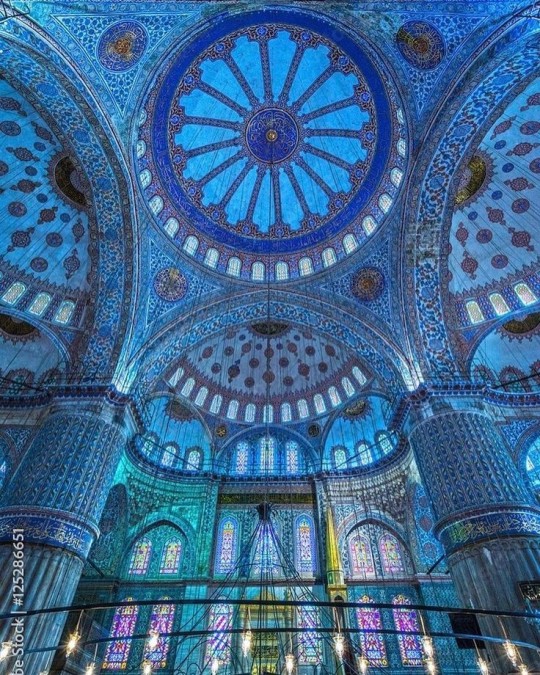
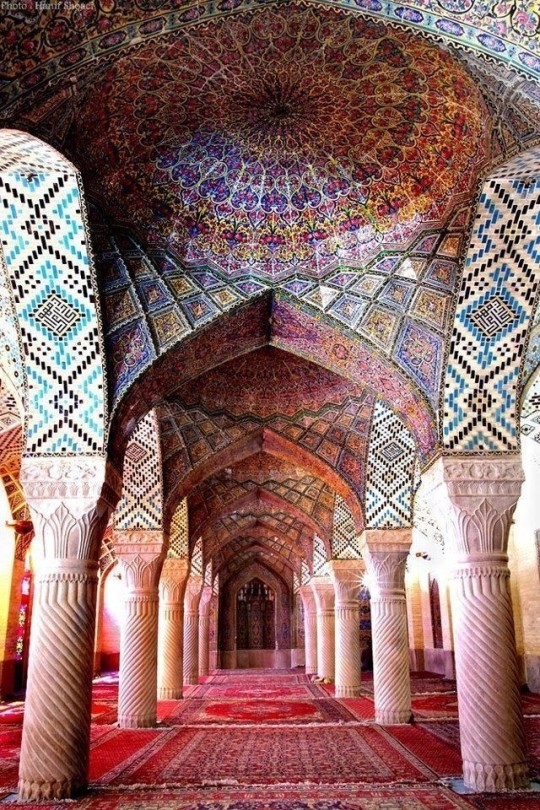
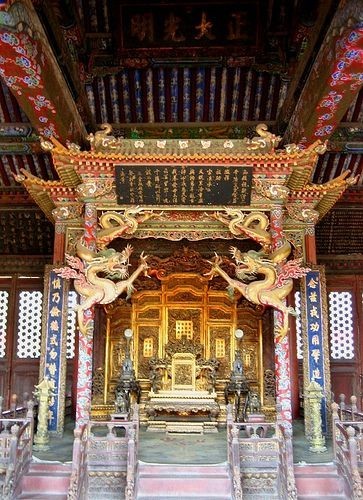
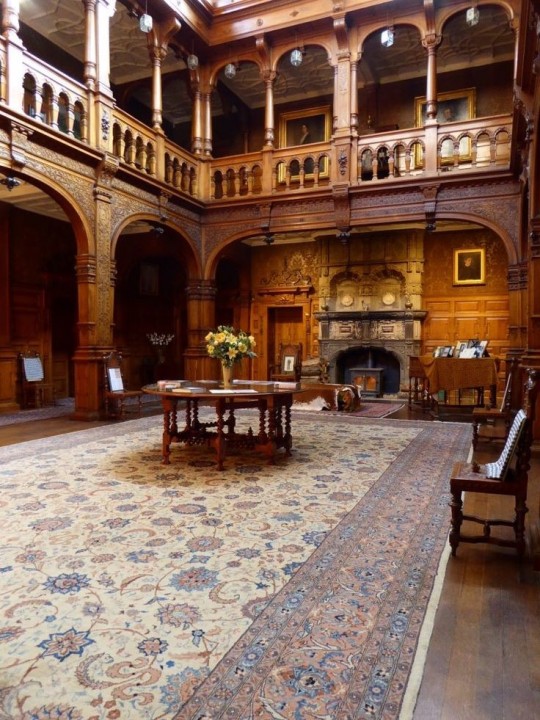

As a followup to the very popular post on architecture, I decided to add onto it by exploring the interior of each movement and the different design techniques and tastes of each era. This post at be helpful for historical fiction, fantasy or just a long read when you're bored.
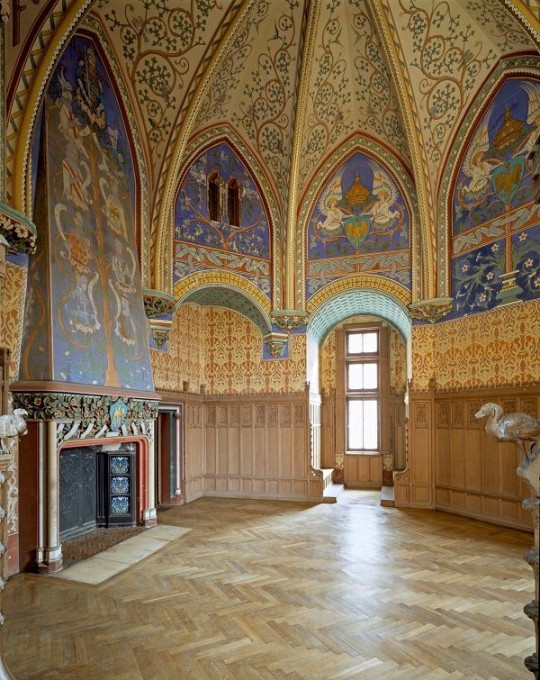
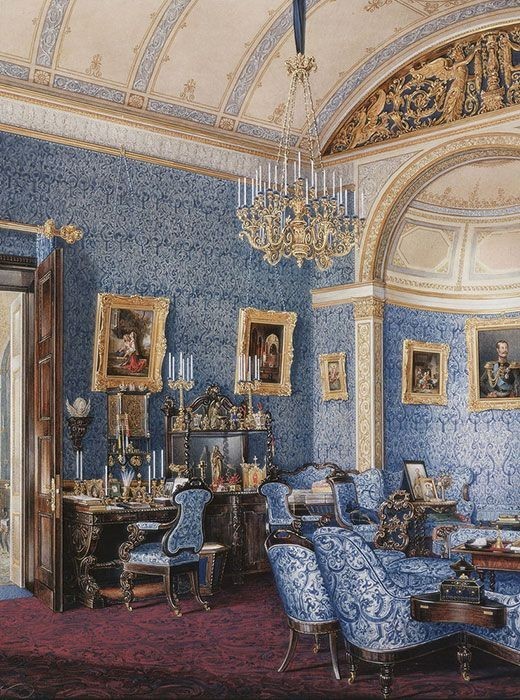
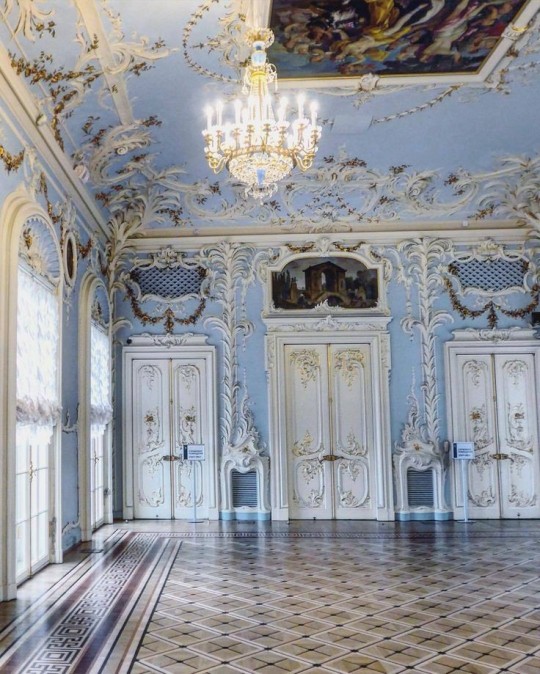
Interior Design Terms
Reeding and fluting: Fluting is a technique that consists a continuous pattern of concave grooves in a flat surface across a surface. Reeding is it's opposite.
Embossing: stamping, carving or moulding a symbol to make it stand out on a surface.
Paneling: Panels of carved wood or fabric a fixed to a wall in a continuous pattern.
Gilding: the use of gold to highlight features.
Glazed Tile: Ceramic or porcelain tiles coated with liquid coloured glass or enamel.
Column: A column is a pillar of stone or wood built to support a ceiling. We will see more of columns later on.
Bay Window: The Bay Window is a window projecting outward from a building.
Frescos: A design element of painting images upon wet plaster.
Mosaic: Mosaics are a design element that involves using pieces of coloured glass and fitted them together upon the floor or wall to form images.
Mouldings: ornate strips of carved wood along the top of a wall.
Wainscoting: paneling along the lower portion of a wall.
Chinoiserie: A European take on East Asian art. Usually seen in wallpaper.
Clerestory: A series of eye-level windows.
Sconces: A light fixture supported on a wall.
Niche: A sunken area within a wall.
Monochromatic: Focusing on a single colour within a scheme.
Ceiling rose: A moulding fashioned on the ceiling in the shape of a rose usually supporting a light fixture.
Baluster: the vertical bars of a railing.
Façade: front portion of a building
Lintel: Top of a door or window.
Portico: a covered structure over a door supported by columns
Eaves: the part of the roof overhanging from the building
Skirting: border around lower length of a wall
Ancient Greece
Houses were made of either sun-dried clay bricks or stone which were painted when they dried. Ground floors were decorated with coloured stones and tiles called Mosaics. Upper level floors were made from wood. Homes were furnished with tapestries and furniture, and in grand homes statues and grand altars would be found. Furniture was very skillfully crafted in Ancient Greece, much attention was paid to the carving and decoration of such things. Of course, Ancient Greece is ancient so I won't be going through all the movements but I will talk a little about columns.
Doric: Doric is the oldest of the orders and some argue it is the simplest. The columns of this style are set close together, without bases and carved with concave curves called flutes. The capitals (the top of the column) are plain often built with a curve at the base called an echinus and are topped by a square at the apex called an abacus. The entablature is marked by frieze of vertical channels/triglyphs. In between the channels would be detail of carved marble. The Parthenon in Athens is your best example of Doric architecture.
Ionic: The Ionic style was used for smaller buildings and the interiors. The columns had twin volutes, scroll-like designs on its capital. Between these scrolls, there was a carved curve known as an egg and in this style the entablature is much narrower and the frieze is thick with carvings. The example of Ionic Architecture is the Temple to Athena Nike at the Athens Acropolis.
Corinthian: The Corinthian style has some similarities with the Ionic order, the bases, entablature and columns almost the same but the capital is more ornate its base, column, and entablature, but its capital is far more ornate, commonly carved with depictions of acanthus leaves. The style was more slender than the others on this list, used less for bearing weight but more for decoration. Corinthian style can be found along the top levels of the Colosseum in Rome.
Tuscan: The Tuscan order shares much with the Doric order, but the columns are un-fluted and smooth. The entablature is far simpler, formed without triglyphs or guttae. The columns are capped with round capitals.
Composite: This style is mixed. It features the volutes of the Ionic order and the capitals of the Corinthian order. The volutes are larger in these columns and often more ornate. The column's capital is rather plain. for the capital, with no consistent differences to that above or below the capital.
Ancient Rome
Rome is well known for its outward architectural styles. However the Romans did know how to add that rizz to the interior. Ceilings were either vaulted or made from exploded beams that could be painted. The Romans were big into design. Moasics were a common interior sight, the use of little pieces of coloured glass or stone to create a larger image. Frescoes were used to add colour to the home, depicting mythical figures and beasts and also different textures such as stonework or brick. The Romans loved their furniture. Dining tables were low and the Romans ate on couches. Weaving was a popular pastime so there would be tapestries and wall hangings in the house. Rich households could even afford to import fine rugs from across the Empire. Glass was also a feature in Roman interior but windows were usually not paned as large panes were hard to make. Doors were usually treated with panels that were carved or in lain with bronze.
Ancient Egypt
Egypt was one of the first great civilisations, known for its immense and grand structures. Wealthy Egyptians had grand homes. The walls were painted or plastered usually with bright colours and hues. The Egyptians are cool because they mapped out their buildings in such a way to adhere to astrological movements meaning on special days if the calendar the temple or monuments were in the right place always. The columns of Egyptian where thicker, more bulbous and often had capitals shaped like bundles of papyrus reeds. Woven mats and tapestries were popular decor. Motifs from the river such as palms, papyrus and reeds were popular symbols used.
Ancient Africa
African Architecture is a very mixed bag and more structurally different and impressive than Hollywood would have you believe. Far beyond the common depictions of primitive buildings, the African nations were among the giants of their time in architecture, no style quite the same as the last but just as breathtaking.
Rwandan Architecture: The Rwandans commonly built of hardened clay with thatched roofs of dried grass or reeds. Mats of woven reeds carpeted the floors of royal abodes. These residences folded about a large public area known as a karubanda and were often so large that they became almost like a maze, connecting different chambers/huts of all kinds of uses be they residential or for other purposes.
Ashanti Architecture: The Ashanti style can be found in present day Ghana. The style incorporates walls of plaster formed of mud and designed with bright paint and buildings with a courtyard at the heart, not unlike another examples on this post. The Ashanti also formed their buildings of the favourite method of wattle and daub.
Nubian Architecture: Nubia, in modern day Ethiopia, was home to the Nubians who were one of the world's most impressive architects at the beginning of the architecture world and probably would be more talked about if it weren't for the Egyptians building monuments only up the road. The Nubians were famous for building the speos, tall tower-like spires carved of stone. The Nubians used a variety of materials and skills to build, for example wattle and daub and mudbrick. The Kingdom of Kush, the people who took over the Nubian Empire was a fan of Egyptian works even if they didn't like them very much. The Kushites began building pyramid-like structures such at the sight of Gebel Barkal
Japanese Interiors
Japenese interior design rests upon 7 principles. Kanso (簡素)- Simplicity, Fukinsei (不均整)- Asymmetry, Shizen (自然)- Natural, Shibumi (渋味) – Simple beauty, Yugen (幽玄)- subtle grace, Datsuzoku (脱俗) – freedom from habitual behaviour, Seijaku (静寂)- tranquillity.
Common features of Japanese Interior Design:
Shoji walls: these are the screens you think of when you think of the traditional Japanese homes. They are made of wooden frames, rice paper and used to partition
Tatami: Tatami mats are used within Japanese households to blanket the floors. They were made of rice straw and rush straw, laid down to cushion the floor.
Genkan: The Genkan was a sunken space between the front door and the rest of the house. This area is meant to separate the home from the outside and is where shoes are discarded before entering.
Japanese furniture: often lowest, close to the ground. These include tables and chairs but often tanked are replaced by zabuton, large cushions. Furniture is usually carved of wood in a minimalist design.
Nature: As both the Shinto and Buddhist beliefs are great influences upon architecture, there is a strong presence of nature with the architecture. Wood is used for this reason and natural light is prevalent with in the home. The orientation is meant to reflect the best view of the world.
Islamic World Interior
The Islamic world has one of the most beautiful and impressive interior design styles across the world. Colour and detail are absolute staples in the movement. Windows are usually not paned with glass but covered in ornate lattices known as jali. The jali give ventilation, light and privacy to the home. Islamic Interiors are ornate and colourful, using coloured ceramic tiles. The upper parts of walls and ceilings are usually flat decorated with arabesques (foliate ornamentation), while the lower wall areas were usually tiled. Features such as honeycombed ceilings, horseshoe arches, stalactite-fringed arches and stalactite vaults (Muqarnas) are prevalent among many famous Islamic buildings such as the Alhambra and the Blue Mosque.
Byzantine (330/395–1453 A. D)
The Byzantine Empire or Eastern Roman Empire was where eat met west, leading to a melting pot of different interior designs based on early Christian styles and Persian influences. Mosaics are probably what you think of when you think of the Byzantine Empire. Ivory was also a popular feature in the Interiors, with carved ivory or the use of it in inlay. The use of gold as a decorative feature usually by way of repoussé (decorating metals by hammering in the design from the backside of the metal). Fabrics from Persia, heavily embroidered and intricately woven along with silks from afar a field as China, would also be used to upholster furniture or be used as wall hangings. The Byzantines favoured natural light, usually from the use of copolas.
Indian Interiors
India is of course, the font of all intricate designs. India's history is sectioned into many eras but we will focus on a few to give you an idea of prevalent techniques and tastes.
The Gupta Empire (320 – 650 CE): The Gupta era was a time of stone carving. As impressive as the outside of these buildings are, the Interiors are just as amazing. Gupta era buildings featured many details such as ogee (circular or horseshoe arch), gavaksha/chandrashala (the motif centred these arches), ashlar masonry (built of squared stone blocks) with ceilings of plain, flat slabs of stone.
Delhi Sultanate (1206–1526): Another period of beautifully carved stone. The Delhi sultanate had influence from the Islamic world, with heavy uses of mosaics, brackets, intricate mouldings, columns and and hypostyle halls.
Mughal Empire (1526–1857): Stonework was also important on the Mughal Empire. Intricately carved stonework was seen in the pillars, low relief panels depicting nature images and jalis (marble screens). Stonework was also decorated in a stye known as pietra dura/parchin kari with inscriptions and geometric designs using colored stones to create images. Tilework was also popular during this period. Moasic tiles were cut and fitted together to create larger patters while cuerda seca tiles were coloured tiles outlined with black.
Chinese Interiors
Common features of Chinese Interiors
Use of Colours: Colour in Chinese Interior is usually vibrant and bold. Red and Black are are traditional colours, meant to bring luck, happiness, power, knowledge and stability to the household.
Latticework: Lattices are a staple in Chinese interiors most often seen on shutters, screens, doors of cabinets snf even traditional beds.
Lacquer: Multiple coats of lacquer are applied to furniture or cabinets (now walls) and then carved. The skill is called Diaoqi (雕漆).
Decorative Screens: Screens are used to partition off part of a room. They are usually of carved wood, pained with very intricate murals.
Shrines: Spaces were reserved on the home to honour ancestors, usually consisting of an altar where offerings could be made.
Of course, Chinese Interiors are not all the same through the different eras. While some details and techniques were interchangeable through different dynasties, usually a dynasty had a notable style or deviation. These aren't all the dynasties of course but a few interesting examples.
Song Dynasty (960–1279): The Song Dynasty is known for its stonework. Sculpture was an important part of Song Dynasty interior. It was in this period than brick and stone work became the most used material. The Song Dynasty was also known for its very intricate attention to detail, paintings, and used tiles.
Ming Dynasty(1368–1644): Ceilings were adorned with cloisons usually featuring yellow reed work. The floors would be of flagstones usually of deep tones, mostly black. The Ming Dynasty favoured richly coloured silk hangings, tapestries and furnishings. Furniture was usually carved of darker woods, arrayed in a certain way to bring peace to the dwelling.
Han Dynasty (206 BC-220 AD): Interior walls were plastered and painted to show important figures and scenes. Lacquer, though it was discovered earlier, came into greater prominence with better skill in this era.
Tang Dynasty (618–907) : The colour palette is restrained, reserved. But the Tang dynasty is not without it's beauty. Earthenware reached it's peak in this era, many homes would display fine examples as well. The Tang dynasty is famous for its upturned eaves, the ceilings supported by timber columns mounted with metal or stone bases. Glazed tiles were popular in this era, either a fixed to the roof or decorating a screen wall.
Romanesque (6th -11th century/12th)
Romanesque Architecture is a span between the end of Roman Empire to the Gothic style. Taking inspiration from the Roman and Byzantine Empires, the Romanesque period incorporates many of the styles. The most common details are carved floral and foliage symbols with the stonework of the Romanesque buildings. Cable mouldings or twisted rope-like carvings would have framed doorways. As per the name, Romansque Interiors relied heavily on its love and admiration for Rome. The Romanesque style uses geometric shapes as statements using curves, circles snf arches. The colours would be clean and warm, focusing on minimal ornamentation.
Gothic Architecture (12th Century - 16th Century)
The Gothic style is what you think of when you think of old European cathedrals and probably one of the beautiful of the styles on this list and one of most recognisable. The Gothic style is a dramatic, opposing sight and one of the easiest to describe. Decoration in this era became more ornate, stonework began to sport carving and modelling in a way it did not before. The ceilings moved away from barreled vaults to quadripartite and sexpartite vaulting. Columns slimmed as other supportive structures were invented. Intricate stained glass windows began their popularity here. In Gothic structures, everything is very symmetrical and even.
Mediaeval (500 AD to 1500)
Interiors of mediaeval homes are not quite as drab as Hollywood likes to make out. Building materials may be hidden by plaster in rich homes, sometimes even painted. Floors were either dirt strewn with rushes or flagstones in larger homes. Stonework was popular, especially around fireplaces. Grand homes would be decorated with intricate woodwork, carved heraldic beasts and wall hangings of fine fabrics.
Renaissance (late 1300s-1600s)
The Renaissance was a period of great artistry and splendor. The revival of old styles injected symmetry and colour into the homes. Frescoes were back. Painted mouldings adorned the ceilings and walls. Furniture became more ornate, fixed with luxurious upholstery and fine carvings. Caryatids (pillars in the shape of women), grotesques, Roman and Greek images were used to spruce up the place. Floors began to become more intricate, with coloured stone and marble. Modelled stucco, sgraffiti arabesques (made by cutting lines through a layer of plaster or stucco to reveal an underlayer), and fine wall painting were used in brilliant combinations in the early part of the 16th century.
Tudor Interior (1485-1603)
The Tudor period is a starkly unique style within England and very recognisable. Windows were fixed with lattice work, usually casement. Stained glass was also in in this period, usually depicting figures and heraldic beasts. Rooms would be panelled with wood or plastered. Walls would be adorned with tapestries or embroidered hangings. Windows and furniture would be furnished with fine fabrics such as brocade. Floors would typically be of wood, sometimes strewn with rush matting mixed with fresh herbs and flowers to freshen the room.
Baroque (1600 to 1750)
The Baroque period was a time for splendor and for splashing the cash. The interior of a baroque room was usually intricate, usually of a light palette, featuring a very high ceiling heavy with detail. Furniture would choke the room, ornately carved and stitched with very high quality fabrics. The rooms would be full of art not limited to just paintings but also sculptures of marble or bronze, large intricate mirrors, moldings along the walls which may be heavily gilded, chandeliers and detailed paneling.
Victorian (1837-1901)
We think of the interiors of Victorian homes as dowdy and dark but that isn't true. The Victorians favoured tapestries, intricate rugs, decorated wallpaper, exquisitely furniture, and surprisingly, bright colour. Dyes were more widely available to people of all stations and the Victorians did not want for colour. Patterns and details were usually nature inspired, usually floral or vines. Walls could also be painted to mimic a building material such as wood or marble and most likely painted in rich tones. The Victorians were suckers for furniture, preferring them grandly carved with fine fabric usually embroidered or buttoned. And they did not believe in minimalism. If you could fit another piece of furniture in a room, it was going in there. Floors were almost eclusively wood laid with the previously mentioned rugs. But the Victorians did enjoy tiled floors but restricted them to entrances. The Victorians were quite in touch with their green thumbs so expect a lot of flowers and greenery inside. with various elaborately decorated patterned rugs. And remember, the Victorians loved to display as much wealth as they could. Every shelf, cabinet, case and ledge would be chocked full of ornaments and antiques.
Edwardian/The Gilded Age/Belle Epoque (1880s-1914)
This period (I've lumped them together for simplicity) began to move away from the deep tones and ornate patterns of the Victorian period. Colour became more neutral. Nature still had a place in design. Stained glass began to become popular, especially on lampshades and light fixtures. Embossing started to gain popularity and tile work began to expand from the entrance halls to other parts of the house. Furniture began to move away from dark wood, some families favouring breathable woods like wicker. The rooms would be less cluttered.
Art Deco (1920s-1930s)
The 1920s was a time of buzz and change. Gone were the refined tastes of the pre-war era and now the wow factor was in. Walls were smoother, buildings were sharper and more jagged, doorways and windows were decorated with reeding and fluting. Pastels were in, as was the heavy use of black and white, along with gold. Mirrors and glass were in, injecting light into rooms. Gold, silver, steel and chrome were used in furnishings and decor. Geometric shapes were a favourite design choice. Again, high quality and bold fabrics were used such as animal skins or colourful velvet. It was all a rejection of the Art Noveau movement, away from nature focusing on the man made.
Modernism (1930 - 1965)
Modernism came after the Art Deco movement. Fuss and feathers were out the door and now, practicality was in. Materials used are shown as they are, wood is not painted, metal is not coated. Bright colours were acceptable but neutral palettes were favoured. Interiors were open and favoured large windows. Furniture was practical, for use rather than the ornamentation, featuring plain details of any and geometric shapes. Away from Art Deco, everything is straight, linear and streamlined.
#This took forever#I'm very tired#But enjoy#I covered as much as I could find#Fantasy Guide to interiors#interior design#Architecture#writings#writing resources#Writing reference#Writing advice#Writer's research#writing research#Writer's rescources#Writing help#Mediaeval#Renaissance#Chinese Interiors#Japanese Interiors#Indian interiors#writing#writeblr#writing reference#writing advice#writer#spilled words#writers
5K notes
·
View notes
Text
New Taxa Added: Sheep and Goats!
We've got some common and uncommon friends in this update!
Rocky Mountain Goats:



Bighorn Sheep:



Sichuan Takin:



Aoudad:



Chinese Gorals:


Want to have input on the next species to come online, or who is photographed next? Join the Patreon!
Artists creating derivative or transformative works (without AI) have blanket permission to use these and all photos in the repository as references, including works that will/may be sold.
The Exotic Animal Photo Reference Repository is an independent, permanently open-access project and funded entirely by donations, please consider contributing if you can!
**Patreon** -- **Ko-Fi**
#art references#art resources#exotic animal photo reference repository#animal photography#animal reference photos#art reference#art resource#art inspo#free use images#sheep#goats#rocky mountain goat#mountain goat#bighorn sheep#takin#sichuan takin#aoudad#chinese goral#hoofstock#new taxa added
368 notes
·
View notes
Text
Here is how I've studied Chinese over the past 4-5 years.
Note: I cram studied a lot of hanzi, words, and grammar in the first year. I got a lot of 'review' by reading graded readers in Pleco app and just looking up words over and over until I learned them, and watching cdramas with english and chinese subtitles and looking up words in Pleco or Google Translate as I got curious. This is what worked best for me, because I cannot stick to something like anki long term - if you can stick to anki long term, then doing something like that regularly may have good results. I prefer to learn by doing what I want to do - which for me, was read.
I also started trying to read and watch shows in just chinese in the first year - which in retrospect was probably harder than I needed to do. After 2 years, I started mostly following Heavenly Path Notion Site's recommended materials (graded readers, easier novels for native speakers etc) and my life got much easier as I started reading Easier stuff more often, and harder stuff less often. I highly recommend beginners check out all the resources linked on Heavenly Path, especially in their Reading Guide and Listening Guide. I did a mix of extensive reading (reading easy stuff where I could guess unknown words from context - I might just read with a TTS to hear the word pronounced), and intensive reading (looking up every unknown word/most unknown words for it's translation in Pleco or Readibu app).
For Hanzi, and Reading:
Read about how hanzi work. I read all the articles I linked on this post about learning hanzi. It will help you in the future to know radicals exist, and to know what mnemonics are since a lot of learning resources recommend them for learning hanzi. I did not memorize radicals, but I did get a basic familiarity with the fact they exist and read over a chart of them once. Later as I studied hanzi, I learned the radicals more in the context of the hanzi they're in.
Downloaded Pleco app, and Google Translate, started looking up a word or phrase whenever I was curious, when I was watching cdramas. If you're watching shows, it's pretty easy to see chinese hard subs on many shows on youtube, and just look up a word or two when you feel curious.
I used this book, I just read through it in like 3 months, aiming for basic familiarity not memorization. Learning Chinese Characters: (HSK Levels 1-3) A Revolutionary New Way to Learn the 800 Most Basic Chinese Characters; Includes All Characters for the AP & HSK 1-3 Exams. I love this book, I credit this book to giving me a decent foundation in hanzi, the mnemonic stories in the book worked well for me, as did the example words. This book is often cheaply used, and can be found free in many libraries and elibraries.
Because I'm a lot, I kept trying to read parallel text webnovels on mtlnovel.com (it has a parallel text chinese/english option if you're logged in). I read some MoDu and some ZhenHun, and it was very hard. In retrospect I would have probably spent my time better with more graded readers, and easier webnovels after lol. I also kept trying to read chinese webnovels with Pleco's click-translate feature. It wasn't bad, I think it helped me a lot, but I did this all from month 1 onward. And it would probably have been easier to wait until I had built more of a foundation to do this.
I used a 2000 Common Word Ben Whatley memrise course which no longer exists, and cram studied 1000 words in a week then reviewed the next 2 weeks, then read some graded readers, and then the next month cram studied 1000 words and then reviewed the next 2 weeks, then read some more. I did reading as most of my actual reviews, because I don't like anki decks and I can't focus on them for more than a few weeks (as my study patterns show lol). I would recommend someone use the Spoonfed Chinese Anki deck if trying to emulate what I did, or ideally any common words chinese deck with audio and hanzi, and ideally in sentence examples. I'd recommend if you're cram studying words to just do 1000-3000, because you'll run into those common words a LOT if you're also reading and watching shows and looking stuff up. So you'll get lots of review of those 3000 words even if you stop using anki, since you'll keep running into those words. After the 3000 most common, it might be more useful to prioritize studying words as you come across them in reading/watching, and either keep looking them up until you remember them or put those in anki (if you like anki).
I started reading Graded Readers in Pleco app, with click-translations. Mostly Mandarin Companion graded readers with 300 unique hanzi or less, then 500 unique hanzi or less, because it was good review in the context of reading for everything I'd just studied over the past few months. I suggest checking out Heavenly Path Notion Site's Reading Guide whenever you'd like to start reading, a lot of good tips in there and a lot of resources I used too (like Pleco app and Readibu app).
I used this book as reference, Tuttle Learning Chinese Characters: A Revolutionary New Way to Learn and Remember the 800 Most Basic Chinese Characters Original by Matthews, Alison, Matthews, Laurence (2007) Paperback. I've flipped through it a few times, never fully read all of it, but another person may find use in it. I liked it as a reference. This book is also easy to find cheap used, or in libraries and elibraries free.
I went through about half of the following anki deck, just cram studying 1500 hanzi cards in a couple weeks, doing a week of review, and then 'reviewing' by reading stuff in chinese and looking words up again and again. It's a great anki deck for studying hanzi.
*Mnemonics - 3018 Simplified Chinese Hanzi deck (I recommend this deck, if I had to go back and do it again)
*Mnemonics - 3035 Traditional Chinese Hanzi (I recommend this deck, if I had to go back and do it again)
*Mnemonics - 4143 Traditional AND Simplified Chinese Hanzi (combines the 2 decks above)
After learning around 1500 hanzi through a combination of reading the books I linked, reading graded readers, and using the anki deck I linked, I just kept reading and looking up words I didn't know that seemed important to the overall meaning of the thing I was reading. Just looking up words, again and again, until I remembered them. Which was usually 2-20 times. I started reading manhua, then webnovels, again see Heavenly Path Notion Site for their recommendations on reading material at different difficulty levels. I was also reading cdrama subtitles, usually with both chinese and english subtitles on, but once in a while I tried to watch a show with just chinese subtitles. I'd look up 1 word every 5 minutes or so, to let myself look up key words that seemed important, but not stop constantly.
Yes, my study consisted of a LOT of 'cram study for basic familiarity of something' then read and watch, and look things I was basically familiar with over and over until they stick and I learn them.
For Grammar:
I read through this grammar guide website's HSK Grammar lessons in like 1 month, not to memorize just to get a basic familiarity. I wanted an idea of the grammar I'd be seeing later, and an idea of what to look up more information about if I got confused later. https://www.hskcourse.com/hsk-grammar-exercises/. I did this in the first few months.
I looked up grammar points later, as I'd read graded readers or watch shows, on this website All Set Learning Chinese Grammar Wiki. I found the explanations on this site helpful. I kept doing this, and still do this if any grammar point in particular is confusing me.
If you want to use anki to study grammar, these decks cover similar material: *Chinese Grammar Wiki Study Deck(if looking for a full grammar guide I recommend this one, which so far has been the most well formatted version and links to the AllSetLearning Grammar points so you can easily do background reading when needed). Ole’s Chinese Grammar Wiki A1, Chinese Grammar Wiki A2, Chinese Grammar Wiki B1, Chinese Grammar Wiki B2 (all adapted from AllSet Learning’s Chinese Grammar Wiki site)
For tones:
I went through the Pinyin Pronunciation Guide and tone trainer on this website dong-chinese.com in a month. Then again a few months later, went through it again.
I also used these:
Maorma.net Minimal Pair Test (I used this in the past, focusing on minimal pairs might help?)
Yoyo Chinese Tone Pairs Chart (may help)
Yoyo Pinyin Chart (has sound for each tone, this may help)
Basically I used everything on under my 'tones' tag. Feel free to browse for more resources. Mostly it was a lot of youtube videos, and explanations. I looked up videos on youtube about tone sandhi, tone pairs, actual tone pronunciation etc. I really liked Grace Mandarin Chinese's channel, and recently I've found Julesy's videos very useful like this one about pronunciation.
For Listening:
So I really HEAVILY focused on learning to read. As you can see above. I have only started focusing on listening more as of this year. If I could go back and give myself advice? I'd suggest to past me to listen to graded reader AUDIO a few times, before and after I read something. To listen to audiobook audio, or at least Microsoft Edge Read Aloud to webnovel pages I'm reading, or at least Pleco Dictation audio, MORE. I barely listened to audio when I read. 3 years in, I finally started reading along to audiobooks or listening to TTS when reading - to get my reading speed to become faster. It did make my reading speed closer to speaking speed, and it also helped my listening skills a lot. I wish I'd done more listening overall, any time I'd read things. Or before/after reading things.
I would also have told past me to Please check out some podcasts for learners, and practice listening earlier. And to try watching a cdrama, just once in a while, with no subs including no chinese subs. Because I can watch cdramas now, but I have to rely on chinese subs. If it's JUST audio it feels 4 times harder to me, and that might not be true right now if I had just... listened more in the last 4 years.
Now? I am watching comprehensible input chinese lessons on youtube (I have them linked here), I've been listening to learner podcasts so the language is easier than stuff I'd read (also linked there as the podcasts listed on some posts), and I've been posting about everything I've been listening to on the tag chinese listening experiment. Which has mostly been audiobooks of stuff I've read before in chinese and english, because as established, I read way more than I listen. So listening to stuff I have read before, is easier than listening to something brand new. It's going okay. Progress in listening skills are steady so the study plan is working out I guess.
For Speaking:
I've done very little to practice this. I still need to work a LOT on it. I used Tandem and Hellotalk for a while to speak with language partners - and using language exchange apps and websites is probably a good plan if you like talking to people. I used a putonghua pronunciation trainer app that is 1. no longer accessible on US app store and 2. no longer has any of the free 'grade your pronunciation' resources I used it for originally. I like as alternatives the apps: ChinesePronunciation Trainer (super simple free setup to shadow and compare your recording to the original), and Ka Learn Chinese Tones (which I've been playing with but I'm not sure about yet).
I plan to shadow audio eventually, and then talk to people more again. I will try speaking again after I've gotten a lot more listening practice in, maybe my speaking will be better. Or it'll still suck. Who knows.
Writing:
Haha... hahahaaaaaaa..... one day I'll practice... In all seriousness, I practice this when I message people on language exchange apps and sites. When I plan to work on this more, I'll probably do a combination of write some journals and message people more again.
I can type pretty fine, because you can type with pinyin and I know what the hanzi I mean looks like so I can select it. I cannot write by hand. I used to be able to write ni hao and xie xie and wo. Now I'm not confident I could do that from memory ;-;
Below the cut is a list of some things I read and listened to over the years, with commentary that is totally cool to skip entirely (I was rambling). I think I picked harder stuff than I needed to at first, and I'd really suggest beginners check Heavenly Path's recommendations for beginners, instead of whatever I was doing (which was sometimes super difficult for me).
Stuff I read:
Mandarin Companion Sherlock Holmes
Pleco Graded Reader Butterfly Lovers
Mandarin Companion Journey to the Center of the Earth
小王子 (extensively read, doable but I probably should have picked something easier, I was really excited to extensively read my first story and it really built reading stamina)
天涯客 (intensively read 20 chapters)
真魂 (intensively read 20 chapters, did listening reading method with same 20 chapters, must have reread the first 20 chapters at least 4 times, also listened to the first 20 audiobook chapters 3-6 times each so I'm very familiar with the words in them, I basically kept engaging until future chapters in this book were 95% comprehensible or more so I could extensively read my print copy)
寒舍 a dmbj fanfic (intensively read 60 chapters)
镇魂 (extensively read the first 30 chapters of my print copy, and the extras)
秃秃大王 (intensively read, but it was close to my reading level so I was only looking up maybe 5 words or less per 100 words. REALLY recommend this story. Easiest thing I read that wasn't a graded reader)
大林和小林 (intensively read, 95%+ comprehensible I was just looking up any basic words I still didn't know, same author as the novel above, probably the BEST novels for beginners to read after graded readers, I found them recommended on Heavenly Path Notionsite)
笑猫日记 1 (intensively read, but it was near my reading level so I was looking up 5 words or less per 100 words, learned a lot of chengyu from this)
笑猫日记 2 (extensively read, extensive reading built up my readind speed and stamina)
寒舍 a dmbj fanfic (extensively read all 110 chapters, probably 95% comprehensible or more especially since I'd learned a lot of words in the early chapters from the first time I read it. Part of the time I listened to Edge's TTS as I read. Built up reading speed by listening as I read. Longest thing I had read and finished at that point, at over 100k words)
盗墓笔记1 (intensively read but it was close to my reading level so probably 92% or more words I already knew, first non-fanfiction I finished reading that was over 40k words)
盗墓笔记2 (extensively read except for a few specific artifact words of things they found in the tomb, first non-fanfiction novel I finished by extensively reading that was over 40k words)
盗墓笔记重启 manhua (extensively read all of it, super easy to read, very funny if you're into dmbj)
19天 (extensively read maybe 50 chapters? Cute, funny, super simple to read)
他们的故事 manhua (extensively read maybe 15 chapters, also very funny and cute and simple to read)
破云 manhua (extensively read 1st volume, I got a print copy, its a bit hard I mean even my copy has chinese definitions of some of the legal/crime terms at the bottom of the pages lol. It's doable to follow, probably because I'm used to crime mystery stories. I also watched the voiced version on bilibili so a little listening practice)
吞海 manhua (extensively read a few chapters, I could follow just like 破云, but I can't quite handle reading the books extensively)
烈火浇愁 manhua (extensively read 5 chapters, the historical bits were harder, the rest was fine. I felt comfortable extensively reading pretty much any manhua by this point. I'd love to read the novel version but I'm certain 烈火浇愁 and 残次品 are beyond my reading ability as of 3/2025, priest's novel 默读 which is a regular modern setting only became possible to extensively read 12/2024. So I don't think I could handle a sci fi setting yet).
半夜衣寒 dmbj fanfic by 夏灬安兰 (extensively read, I just really like this person's writing style, and their writing is easier than priest for me to read and just perfect for me? I really enjoy their plots. This author's fanfics are who I credit for getting used to grammar in long sentences and getting used to "intuitively" understanding it, and for starting to do those kind of reading inferences of what is implied but not explicitly stated. Such as picking up character moods from physical descriptions, rather than words about their mood, and picking up hints about the ghost cases that hint things about characters in the stories as parallels. And I picked up familiarity with a ton of common adjectives and 4 hanzi descriptives from this author).
If anyone were going to copy what I did, my suggestion would be: check out Heavenly Path's reading recommendations list, pick novels in gradually increasing difficulty. Their easiest recommendations are extremely doable if you've been using graded readers for a while, and know around 1000 hanzi/HSK4 vocabulary. I think I struggled with a lot of material that was more difficult than it needed to be, at times. On the other hand? I feel that me frequently switching between intensively reading something somewhat above my reading level, and extensively reading something at my reading level or slightly above my reading level, helped me increase both my comfortable reading level and my reading stamina/speed. I think a mix of harder and easier material definitely helped me push through plateaus and onto more difficult novels I wanted to read, and it's still the strategy I use to work up to harder reading material. I would also recommend: listen while you read SOMETIMES. READ without audio sometimes (to practice reading skills), read with audio sometimes (to match pronunciation to words and push reading speed up closer to speaking speed), and listen to audio without text sometimes (build listening only skills). I did a bit of all 3 activities, but I speny the majority of my time reading without audio... and now I have to work harder on my listening skills to fix the large dfference between reading and listening skills.
Stuff I listened to:
Lazy Chinese (perfect for beginners, also any other Comorehensible Input Lessons youtube channels, see Comprehensible Input Wiki for more channels)
Peppa Pig (doable for beginners)
Maomi Chinese (easiest podcast I've found)
Astroboy Chinese dub (I have a lot of reading skills, cartoons for 5-10 years old are perfect for me)
Tea Time Chinese (intermediate podcast, doable for me)
Talk to Me in Chinese (intermediate podcast, doable ish for me)
Dashu Mandarin (advanced podcast, I don't quite understand it yet)
The Untamed condensed audio
Guardian condensed audio
Ice Fantasy condensed audio
镇魂 audiobook (I'm familiar with the plot, so it's doable, I am waiting to continue listening until I finish 默读)
默读 audiobook (I sure love working on difficult stuff I'm into lol, because I'm familiar with the plot it's doable)
HP audiobooks (they're on the easier end and I'm familiar with the plot, I'm going to keep going and see how much I get from it)
Twilight audiobooks (they're on the easier end and I'm familiar with the plot, I'm going to keep going and see how much I get from it)
SCI audiobook (I'm only 2 hours in, hoping it'll be doable soon)
撒野 (I'm only 1 hour in)
#chinese#chinese study plan#study plan#chinese study plan masterlist#chinese masterlist#chinese resources#resources#i do not know how to tag this
80 notes
·
View notes
Text
Part 1 of my list of Chinese indie brands
It’s a lot to sort through and compile honestly so i wanted to start with a much smaller section that I think the people who interact with my account would find the most interest in:
Oldschool on taobao
Disclaimer: I’m not arguing semantics about a key word in a post made to highlight Chinese brands. Oldschool has always been used as short hand and as a key word to describe the aesthetics and style of pieces from a certain time and not just pieces actually from that time. If you’re actually confused: these are not authentically pre 2006 lolita shops: they’re simple shops that I think do a good job at emulating oldschool aesthetics, or have items that work well in oldschool coords. Disclaimer over now let’s get into the fun stuff
Shops with ❤️ next to their names are ones I’ve personally bought from and can discuss in more detail if wanted !


❤️Lace garden
vintage headbands shop
Mukumuro
❤️Totoro shop
❤️Flower bag shop
❤️summer clothing studio
❤️rococoheroine
sos meme club
sweetheart wonder house
rose and neverland
cyan cat
take shuya away
little bear lolita
❤️nobleman socks
big grocery store
a thousand trees
Antaina
Angelic imprint
With puji
Princess reserved
Youma princess mother and baby
Not everything from these shops works for oldschool and may not be everyone’s taste but I hope it helps!
I will be making follow up posts of specific oldschool items I’ve found that aren’t from shops that consistently sell oldschool. Thank you guys for being patient with me putting all this together.
#oldschool lolita#old school lolita#sweet lolita#lolita fashion#lolita advice#chinese lolita brand#chinese indie brand#chinese lolita#Fredericks taobao guide#lolita resources
154 notes
·
View notes
Text

These are the apps and links I currently have on my phone to study Chinese:
SuperChinese: my main study resource. There are currently 7 levels, level 7 (still incomplete, they are still slowly adding lessons to it) being HSK 5 stuff. Each lesson has vocabulary, grammar and a short dialogue where those are used in context (I love context). It has a few free lessons in the lower levels but after that you have to buy a subscription. There are many sales though. When I was a beginner I used HelloChinese instead, which has more free content, and switched to SuperChinese when I finished all the free content there. It also has social network features and chat rooms I don't use.
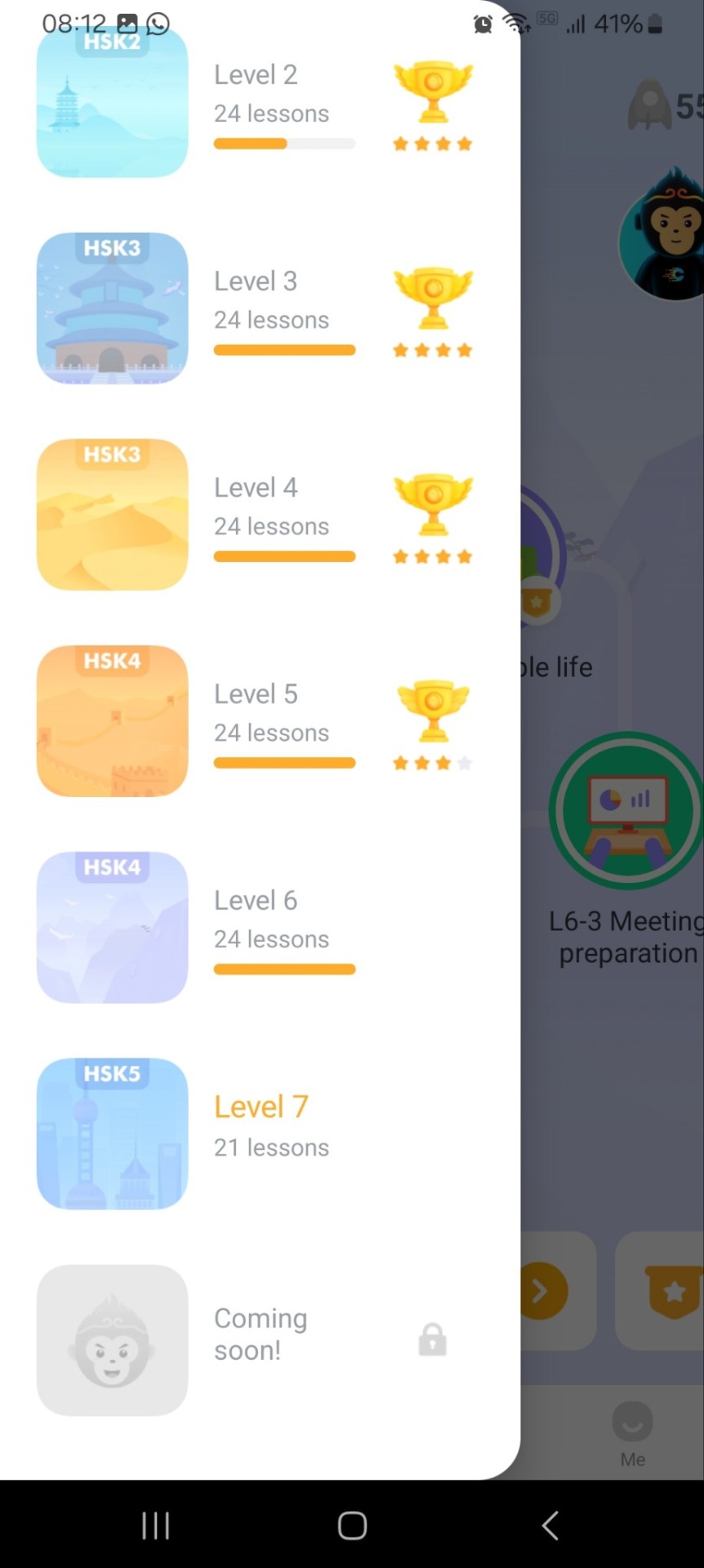
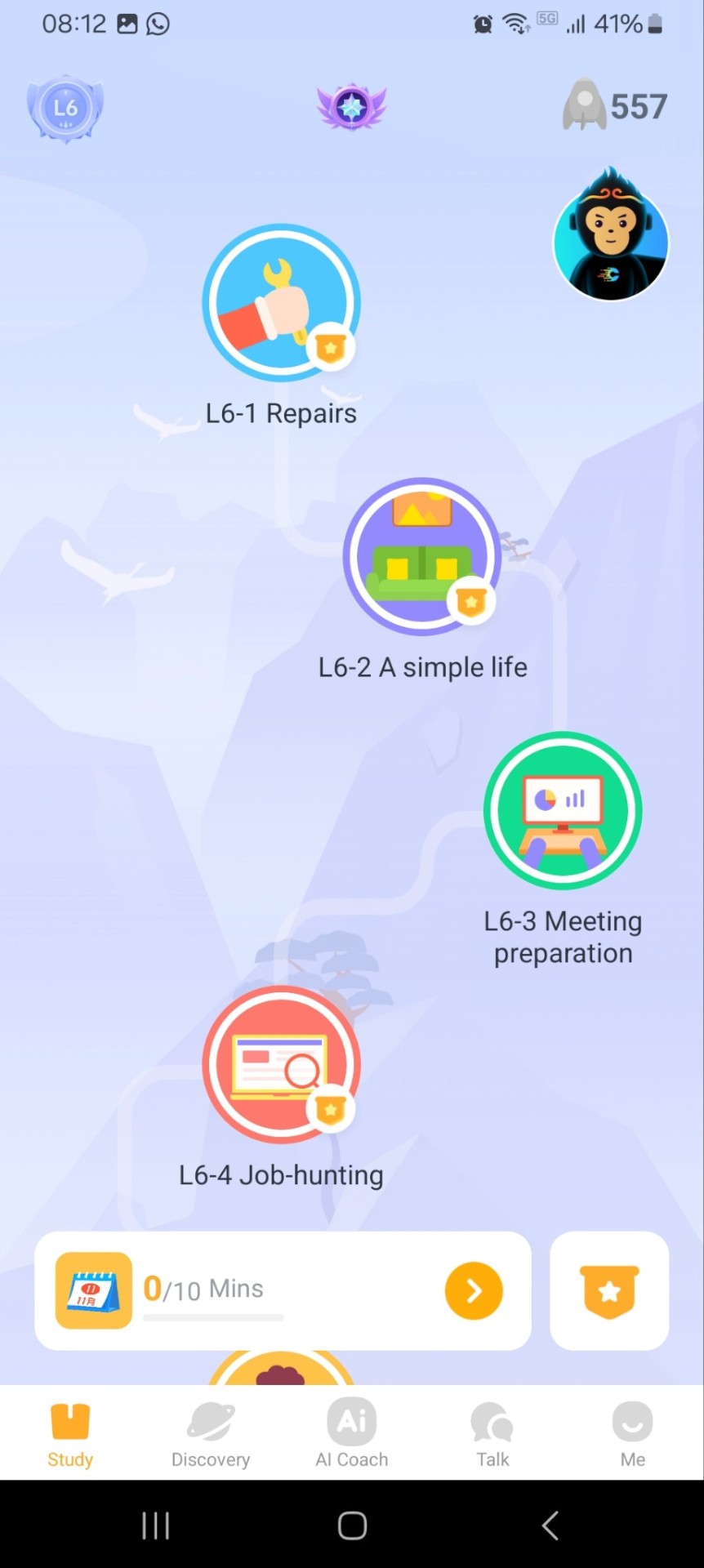
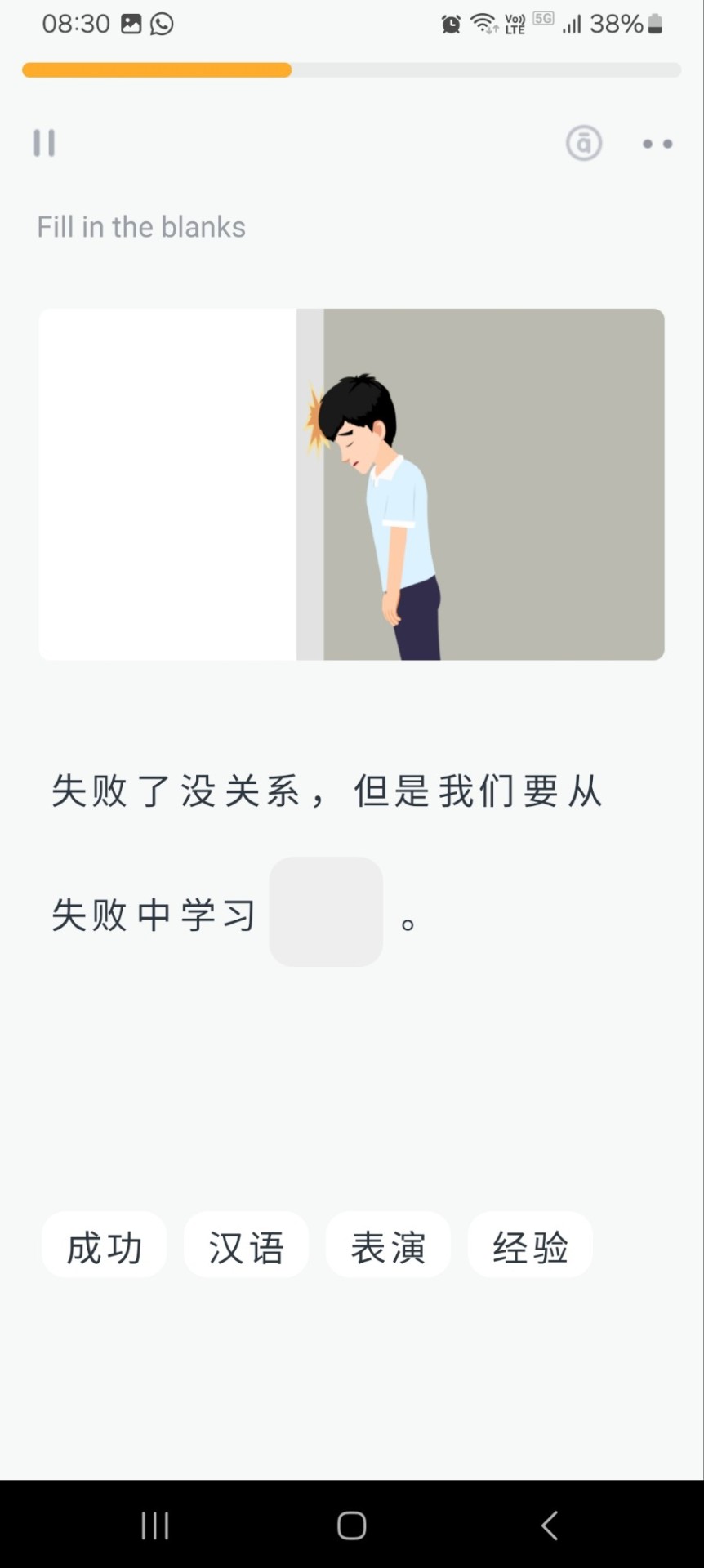

TofuLearn is like a flashcard app with many pre-made decks (you can also create your own on their website and import decks from Anki) and the option to practice writing hanzi. Anki didn't work for me, but I find Tofu very helpful. Practicing writing helps me with character recognition, and it also helps me remember the tones thanks to the audio in the pre-made HSK decks.
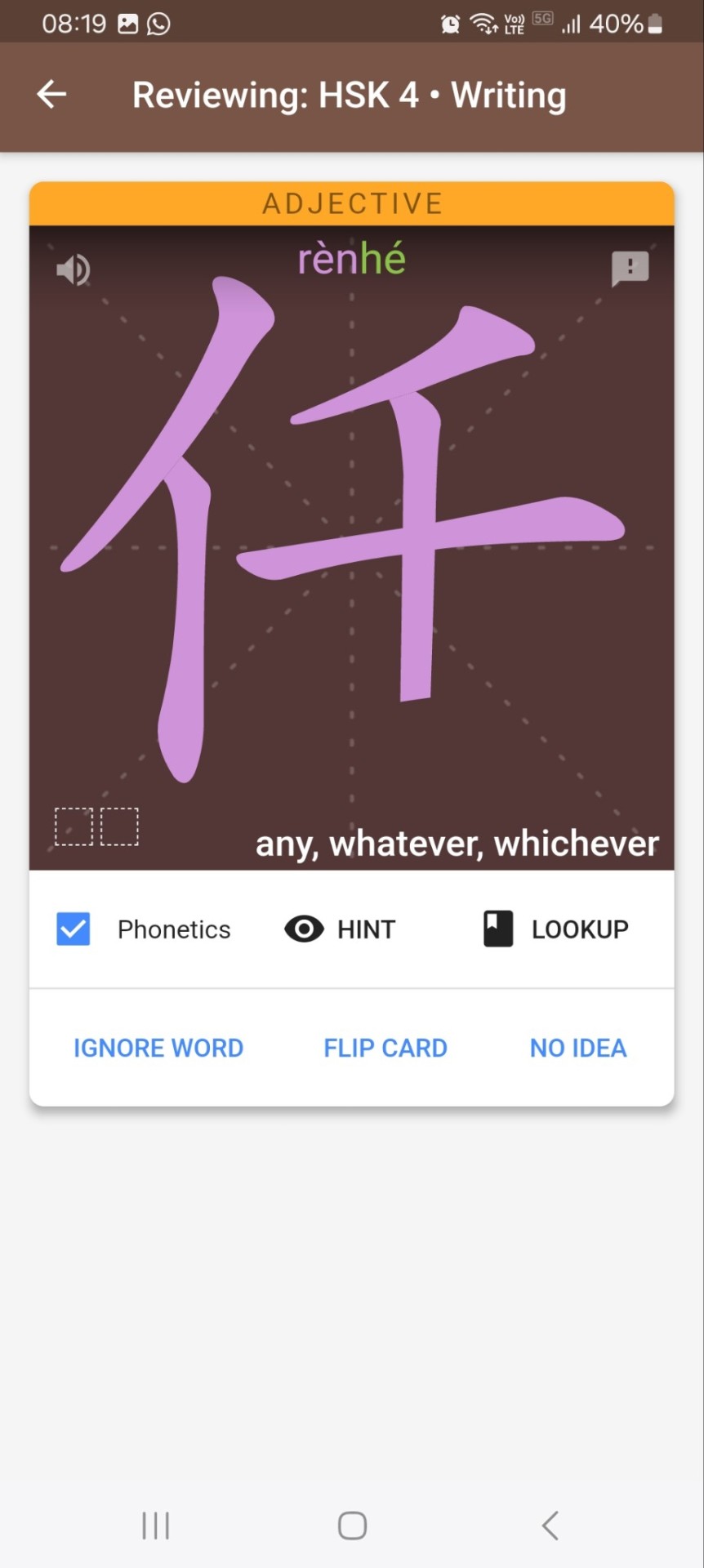
Dot is a reading app with new texts being added every day. It used to be completely free, which actually seemed too good to be true, and then they put practically everything behind a paywall and very strict limits for free users. After a couple of months they made it a little less restricted though - we still can't choose the articles but we can read as many as we want as long as we do the vocabulary exercises after each article (plus, during the Spring Festival, they made all articles available for free for 3 days and we could save the ones we were interested in to read later). It follows the new, not-yet-implemented (and harder) HSK levels, so you should start one or two levels below yours and if the texts are too easy move up.
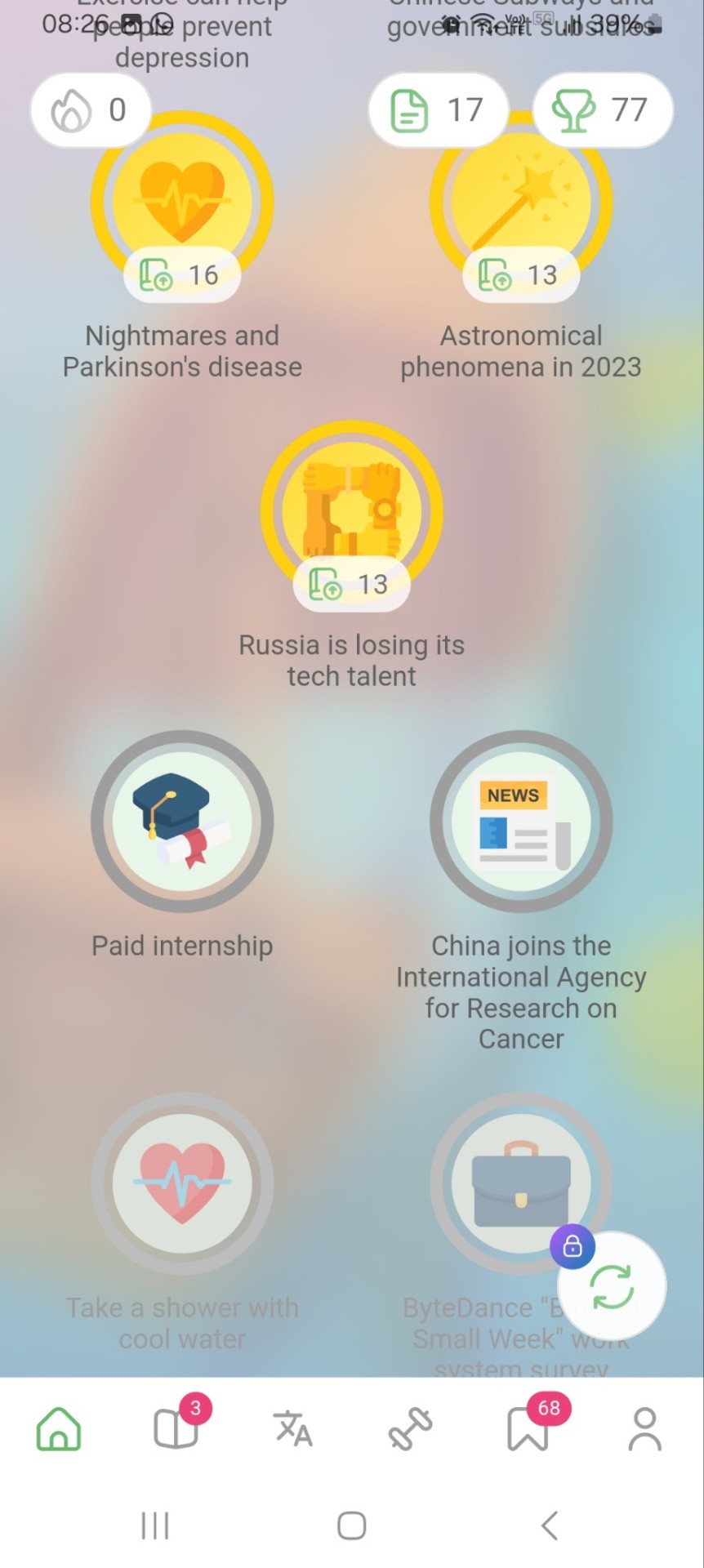
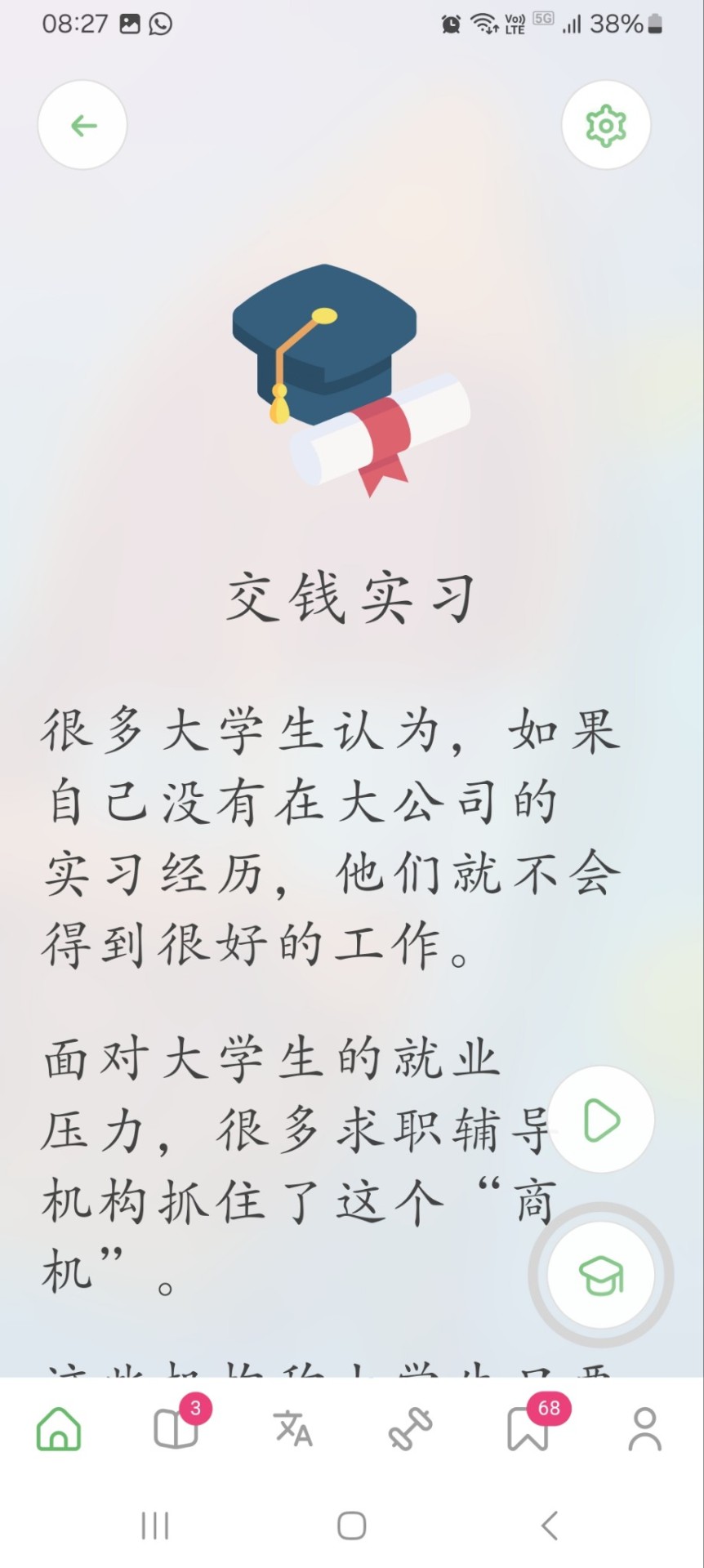
Google Translator: not the best but helpful when I need to translate whole sentences, plus I can point my camera or open an image and it translates writing.
Pleco: best Chinese to English dictionary.
Stroke Order: not an app but a website, does what it says in the tin: shows stroke order for a specific character.
YouGlish: also a website, you can put a word or phrase and it shows videos where people say that word/phrase. Very cool.
Todaii is a graded news app that has only two levels: easy and hard. I'm around level HSK4 and the "easy" level is quite hard though (but I admit reading is my nemesis).
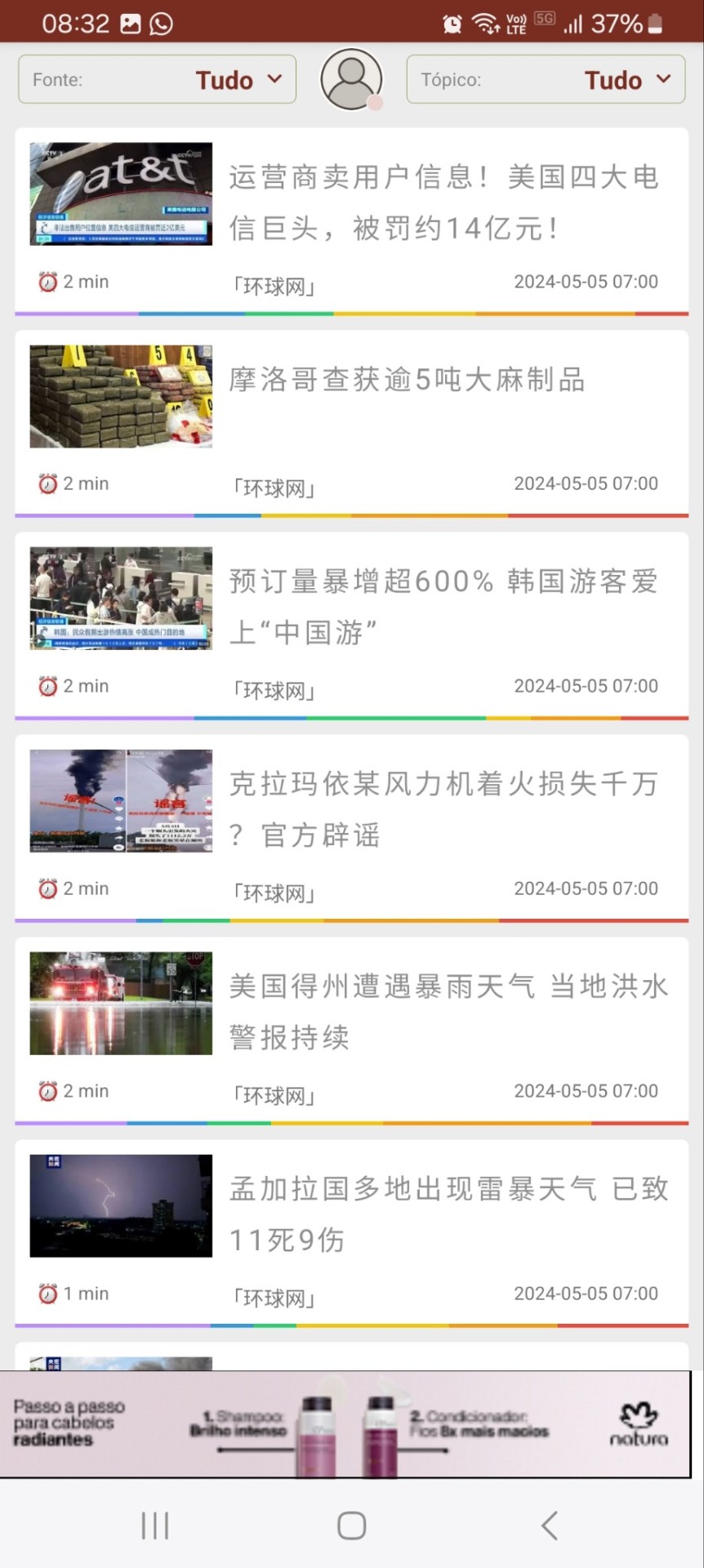
I also use YouTube and Spotify a lot.
#personal#resources#langblr#language learning#learning chinese#chinese langblr#chinese language#mandarin#中文
576 notes
·
View notes
Note
could we hear more abt ur super secret au/transmigrated apartment building au? 🥺 i'm a big fan of these sorts of AUs, and i can never get enough of them
The apartment building is 5 stories, 4 apartments per floor. Initial headcount is 34 people, 4 dogs, 6 cats, 2 turtles, a snake and a tank of goldfish.
The apartment transmigrated in the middle of the night when everyone was home so most people just suddenly woke up Elsewhere. (Some people were not asleep.)
Specifically they're in PIDW post worlds merging, so the mountain they're at the foot of is Bai Lu Mountain, and the river they're on the banks of is the Luo, but the closest human settlement is HHP and it's several days away. (Far enough away no one at HHP immediately notices the building).
(Why yes, this Luo Binghe has gone on a weird thought provoking trip to another universe- but we'll worry about him later.)
Airplane and Cucumber Bro are the only two who've read PIDW (some more people read it later but most of them wait for the version SY makes where he strips out the story and just leaves a glossary of plants, animals and such). That plus Airplane's natural aptitude for logistics and SY's ability to figure out problems not involving his own emotions quickly puts the pair of them in a semi-leadership position. There's lots of little apartment meetings while they figure out what exactly to do. Which is start a tea room- they need money-get some animals to raise, start growing food, figure out securing their water and electricity, and let the med students help out the occasional traveler in need.
They figure out the mountain is Bai Lu when a few of the adults, including Airplane, investigate the little girl who loves snakes' report of a "nice weird snake guy" in the woods. This culminates in Airplane and Cucumber Bro sitting around an extremely confused Tianlang Jun trying to figure out how to un-trap him when they only got spiritual veins two weeks ago.
Tianlang Jun: ...Why?
Shen Yuan: What you think we can just go home knowing you're here? Sounds like something assholes would do and we aren't assholes. *pats his head*
Tianlang Jun: ...huh. All desires for vengeance against humanity have suddenly left my body.
They do eventually get him out and Tianlang Jun and Zhuzhi-lang move into one of the empty apartments in the building. Tianlang Jun is in Rough shape but luckily the med students are very eager and have a great time testing things out on the Heavenly Demons (Zhuzhi-lang volunteered for it, it's fiiiine. And look! Now they know giving heavenly demons blood thinners is a bad idea! Science!)
The Heavenly Demons get attached to the apartment residents pretty quickly and wind up acting as bouncers and guards for the building once they're on their feet.
Tianlang Jun looooves movies, and modern music and books and the building has a lot of them. The token white guy James has been cataloguing everyone's movies, books and such so they can set up an inter- apartment lending system. And also it's a good idea for everyone to know that the single Mom on the top floor has all the books about gardening you could ever want. (She's the one who starts propagating the tomatoes and such).
One last fun thing, Airplane is taller than Cucumber Bro in this AU. Shen Yuan is borderline short thanks to the lifetime of medical issues. He's not salty about it.
#pidw apartment au#svsss au#currently SY is down in my notes as having MS but that's something I need to research more#i also do have names for everyone but I'm still making sure they aren't bad#Airplane's family name is Shang but I can't settle on a personal name#i think I want it to have 'hua' in it but I don't like the current one I have down#anyone got resources for naming folks in Chinese?
115 notes
·
View notes
Text

I started reading this serialized fantasy novel in Chinese called Twig 枝丫. It’s about trees growing in people and controlling them 😱 Very spooky and intriguing. It’s written by a student and specifically for intermediate learners. The Substack has vocab lists for each chapter and audio, which is amazing! The best part is that a new chapter comes out every Friday. I’m only on chapter 10 so far, so I’m not caught up yet. If you also want to read it, you can just look up the Twig 枝丫 Substack. I pasted the chapters into Pleco to look up words.
I’ve also been watching this show called Women in Taipei 台北女子圖鑑 and it’s really good. I feel like I can understand about 80% of it. Apparently it’s an adaptation of a Japanese show, so I might also watch it in Japanese. Oh wait I just looked it up, it’s an adaption of Tokyo Girl, which was the first show I watched in Japanese 😅
#langblr#chinese#mandarin#mandarin resources#mandarin readers#reading#中文#substack#pleco#chinese langblr
212 notes
·
View notes
Text
while we're at it i hate that whenever somebody brings up tibetan mastiffs nowadays they're almost always referring to the viral overbred monstrosities coming out of china and not actual normal tibetan mastiffs.
if you're going to a registered breeder who regularly shows their dogs in AKC/KC/CKC circuits, they will look something like this:




in recent decades it became fashionable to breed very exaggerated dogs as a status symbol for wealthy people in china, nothing about these dogs are practical it'll cost an arm and a leg to keep groomed. these are very extreme examples of the breed and really really shouldn't be normalized as the desired tibetan mastiff type:
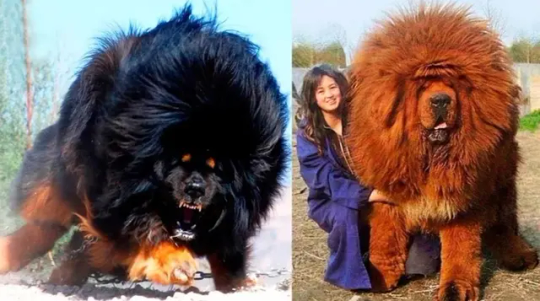


for contrast, here's a bitch from the 1920s bred in UK and old photos from central asia, yes they were large but were never meaty or extremely heavy-set dogs, they should not look as if they're constantly fighting gravity.



#i love these guys#i should add theres most definitely breeders somewhere in china who are preserving the historic type#i dont want this to come across as superior enlightened western breeders vs backwards chinese breeders of a chinese breed#but its very hard for me to find resources since i can't navigate the chinese websphere but i guarantee theres likeminded ppl over there
311 notes
·
View notes
Note
for requests could you possible do gold themed with “mythical” creatures? Like unicorns, lions, dragons etc
obviously lions aren’t.. mythical creatures but I see them included in old stories and artwork with unicorns a lot so I think they also fit 🦁
✧・゚Gold-themed mythical creature stamps.°˖✧









Thank you for the request! Sorry for the late response, I've had a busy month (⊙_⊙)
These were a bit different from my usual style but fun to make. Hope you like them anon!! ⸜(。˃ ᵕ ˂ )⸝♡
❤︎ Template
#my stamps#my creation#request#mythical creatures#gold#griffin#fairy#dragon#chinese dragon#unicorn#the last unicorn#sleeping beauty#phoenix#myths and legends#lion#kitsune#mermaid#gold aesthetic#aesthetic#regal#decoration#stamps#web graphics#page decor#rentry graphics#rentry resources#rentry decor#old internet#deviantart stamps#blog decor
110 notes
·
View notes
Text
Need a Chinese name?
Try some of these resources:
Righteous Blood, Ruthless Blades Naming Conventions Manual
Yabla: Online Pinyin Dictionary (search the keyword “surname” and you will get surname recommendations)
Choose a Name by how many Strokes are in it
Mandarin Chinese Character Generator
Evolution of Han Chinese Names
Please feel free to add more!
#china#Chinese#Chinese name#Chinese name generator#Chinese characters#character names#oc#original character names#writing#resource#svsss writing resource#svsss#mxtx#mdzs#tgcf#reference#Misfitrefs
223 notes
·
View notes